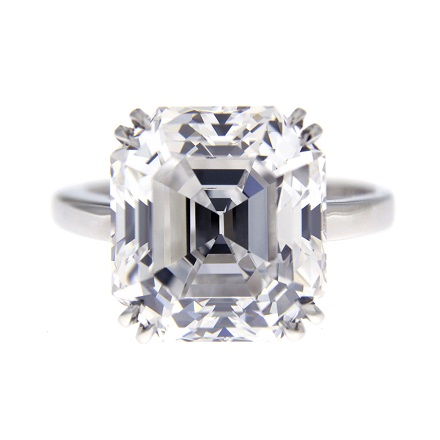Learn About the Emerald Cut
 Emeralds are one of the most popular colored gemstones. While they are beautiful, they’re also fragile. Diamonds are much harder, but still have vulnerable aspects. The emerald cut benefits both stones. It showcases the jewel’s interior in a design which reduces the risk of harm. Emerald cut engagement rings go in and out of vogue, but are always stylish.
Emeralds are one of the most popular colored gemstones. While they are beautiful, they’re also fragile. Diamonds are much harder, but still have vulnerable aspects. The emerald cut benefits both stones. It showcases the jewel’s interior in a design which reduces the risk of harm. Emerald cut engagement rings go in and out of vogue, but are always stylish.
The emerald cut gets its name from a cutting style very common to the green stone. They’re step cut, with parallel facets on the top and bottom halves. The shape is rectangular with cropped corners to lower the risk of chipping. Rather than focusing on brilliance, other traits are highlighted.
Due to the cut’s lower brilliance and broad top facet, much of the diamond is visible. Stones with high clarity grades are recommended for emerald cuts. However, people in search of unique engagement rings may want a jewel with unusual clarity characteristics. An unusual feather or second, smaller gem in the diamond may turn a ring into a conversation piece.
This cut also underscores a diamond’s color. A jewel that seems clear as a brilliant, may look yellower as an emerald cut. Higher color grades are recommended for emerald cut diamond rings. However, yellow gold can help camouflage hue, and some people may prefer a hint of color in their stones.
Emerald cuts are attractive in many settings. As a solitaire, all the attention is on the jewel. Side stones provide added brilliance. Prong settings allow greater amounts of light to travel through the stone. Cathedral style mounts create a sort of pedestal to better showcase the diamond.
Experiment with Valentin Magro’s diamond engagement ring design board to find what you like best.





